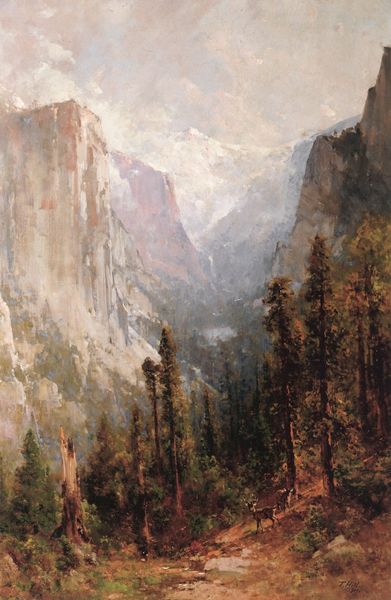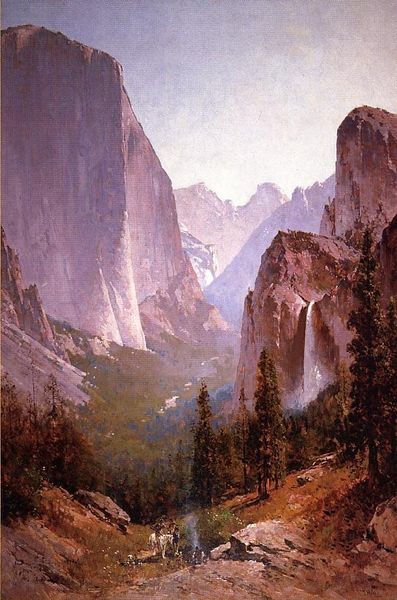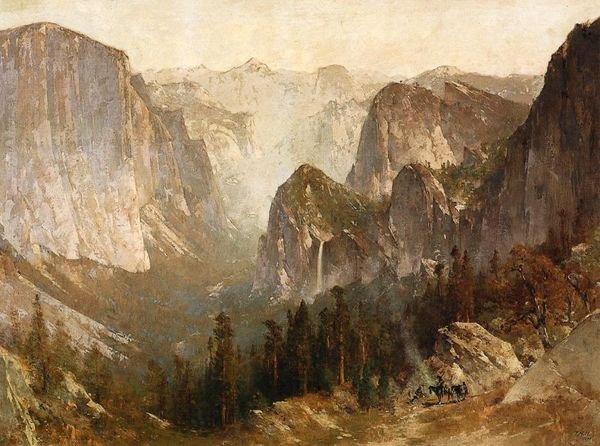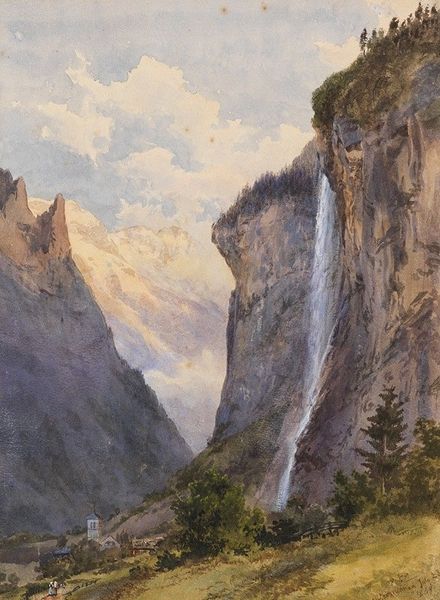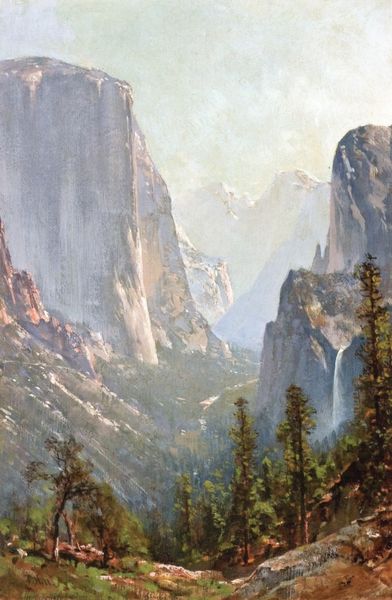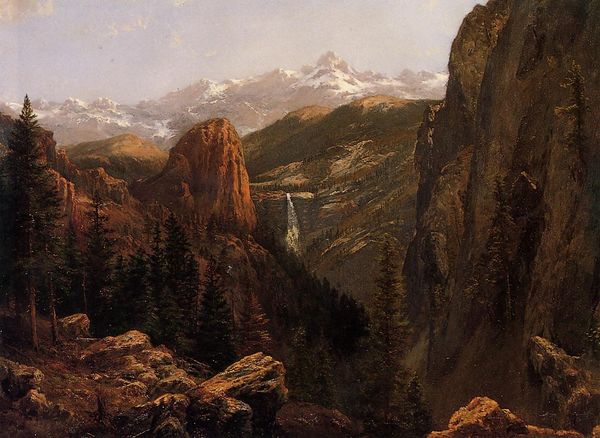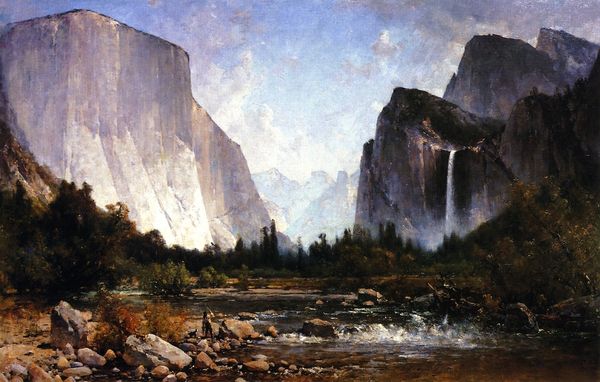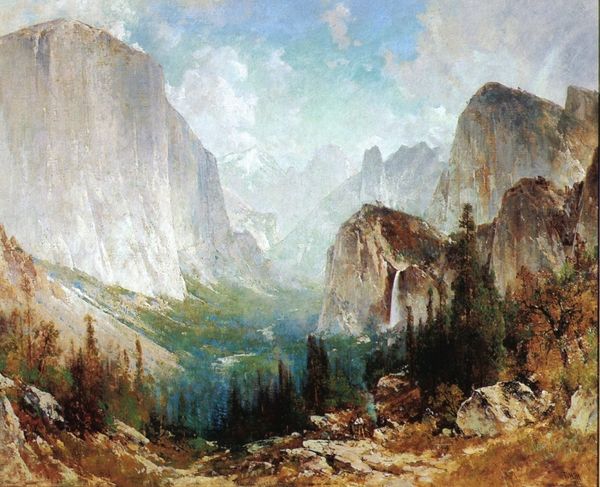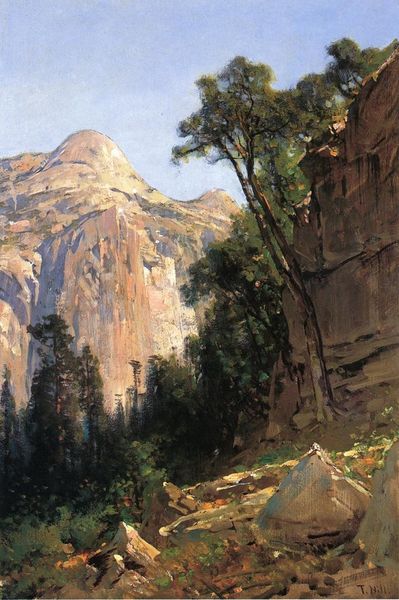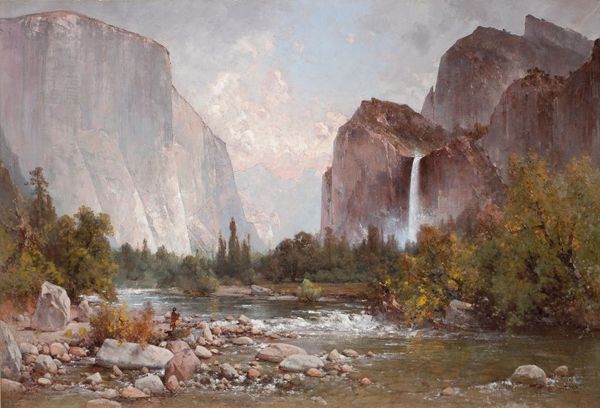
Copyright: Public domain
Curator: Let's spend some time with "Early Morning, Yosemite Valley" by Thomas Hill, created in 1884 using oil paint. What strikes you first about this piece? Editor: The scale, undoubtedly. I’m immediately dwarfed by the immensity of the landscape. The light, that golden haze, almost romanticizes the scene. I can’t help but consider the impact of its original cultural framing. Curator: Hill belonged to the Hudson River School, and they frequently sought to depict the grandeur and sublime power of nature. Think of it as artistic nation-building, visually staking a claim to American exceptionalism through landscape. Editor: It's impossible to divorce these romantic landscapes from the concept of Manifest Destiny. They present an empty wilderness, ripe for the taking, conveniently omitting the Indigenous peoples who were forcibly removed to make way for this idealized vision. Where are the Ahwahneechee? Curator: True, that’s a key point to consider. This vista offered viewers a sense of ownership and spiritual connection to the land but within a context of westward expansion and displacement. The luminous technique further enhances that effect. The way Hill captures the light, almost like a divine presence, adds to the sense of promise. Editor: But what promises were actually being delivered? This image perpetuates a specific narrative. Even the small figures of the travelers near the bottom… they seem to be confirming humanity's dominance, our right to explore and subdue. Are we admiring nature or laying claim to it? Curator: And consider the role Yosemite played in the early conservation movement. Images like these were used to promote national parks, but access was often limited to privileged groups, solidifying existing power structures even within supposedly 'protected' spaces. Editor: Exactly. It’s vital to understand this context. Appreciating the artistic skill is one thing, but overlooking the social and political dimensions does a real disservice to both the art and history. We need a dialogue that is not simply about art, but the cultural significance and socio-political elements around the work. Curator: A point well-made. It reminds us that landscapes, no matter how beautiful, can also be powerful agents of ideology. Editor: A sobering thought to carry with us, but a necessary one as we move forward in looking at how this beautiful country, and images such as this, have constructed myths around an incomplete story.
Comments
No comments
Be the first to comment and join the conversation on the ultimate creative platform.
